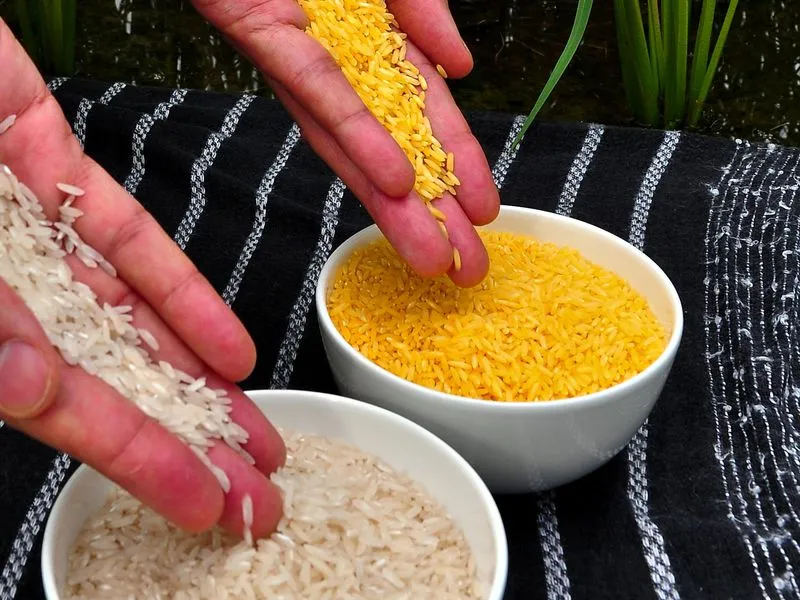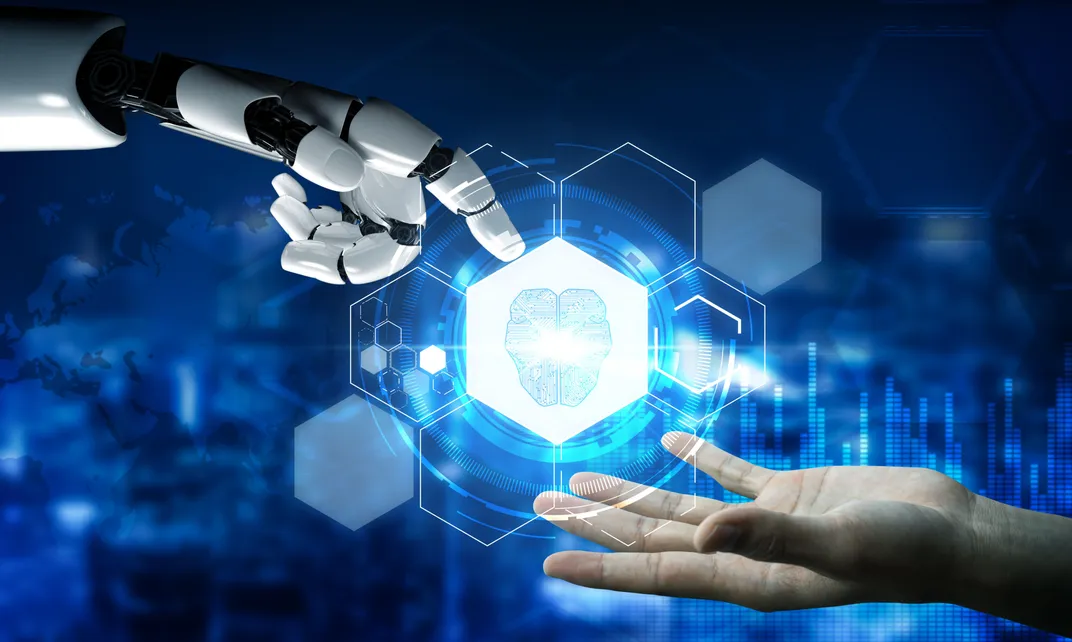When the 2010s began, private spaceflight had barely gotten off the ground, Google was rolling out early personalized search results and CRISPR-Cas9 gene-editing technology was still in its infancy. By decade’s end, artificial intelligence had trounced people at a bevy of board games, SpaceX had become a household name and genetically modified human embryos became a controversial reality.
Clearly, a lot can happen in a decade—but innovation has to start somewhere. Based on what’s breaking through now, here are some trends that have the potential to shape the 2020s.
Missions to the Moon, Mars and More
The decade ahead promises an impressive lineup of space missions. NASA’s Artemis program aims to land the first woman and next man on the moon by 2024—but will likely be pushed back to 2028—with additional trips each year thereafter, paving a path for future missions to Mars. Landing astronauts on Mars won’t happen in this decade, but this summer, a new rover will be headed to the Red Planet.
Also in 2024, Japan plans to send its Martian Moon eXplorer (MMX) probe to Mars' two moons, Phobos and Deimos. MMX will touch down on Phobos, which has a gravitational pull 1,800 times weaker than Earth’s, making landing a breeze but is still strong enough to keep the spacecraft ground-based after landing. A sampling device connected to the spacecraft will collect a bit of soil to take back to Earth. MMX will also drop off a rover and then leave Phobos to survey Deimos before returning to Earth in 2029.

MMX won’t be the only spacecraft bringing samples back home. Japan’s Hayabusa 2 mission will collect samples from Ryugu, an asteroid believed to have organic matter and water remnants from when the solar system first formed roughly 4.6 billion years ago. Similarly, NASA’s OSIRIS-REx has been orbiting and surveying the asteroid Bennu since December 2018. Beginning this year, it will start practicing landing on the asteroid to collect a sample from its surface. According to NASA, researchers suspect that dirt on Bennu may contain “the molecular precursors to the origin of life and the Earth’s oceans.” (Bennu could collide with Earth late in the 22nd century, making it a valuable research target.)
Flying Cars—No, Really
A future with flying cars may seem cliché, but this might be the decade that gets this reality off the ground.
Most flying vehicles currently in development resemble large, electrically-powered drones that can be mostly automated so the operator doesn’t need a pilot’s license. But other details vary from model to model: While some resemble the “Jetsons” dream of the 1950s—they’re convertible from wheeled to winged, allowing them to transition from the open road to the airways—most of today’s “flying cars” look and operate much more like helicopters.
The biggest market for so-called “flying cars” isn’t for personal usage, but rather for fleets of air taxis. Uber, for example, has been pushing for air taxi services since 2016. This year, the company set its sights on Dallas, Los Angeles and Dubai as cities to test the system that would bypass standstill road traffic. Uber expects to expand commercially as early as 2023, according to Digital Trends. Until regulations and infrastructure are able to support air traffic, though, most people won’t be able to upgrade their personal vehicles just yet—and many doubt the practice will ever go mainstream.
But the reality of flying cars is hard to ignore when the field is packed with industry big shots, including Boeing, Porsche, Hyundai, Aston Martin, Rolls Royce and the Chinese firm Geely, which owns or holds stake in numerous auto companies. (Even the U.S. military is partnering with personal air vehicle manufacturers.)
Better Batteries

The future is electric, which means advancements in battery technology will be crucial to innovation in the 2020s. The next generation of electric cars, solar panels and smartphones will require improvements to battery life and cleaner, more efficient ways to mass-produce them.
All batteries have two electrodes, a cathode and an anode, connected by a liquid electrolyte that allows ions to flow between them. In lithium-ion batteries, the current state of the art that powers machines from laptops to Teslas, most anodes are graphite, but engineers continue to play around with different cathode materials. Most smartphones and laptops today use lithium cobalt oxide as a cathode, which is good at storing energy but costs a lot of money, doesn’t last long and often conducts heat easily. The coming decade could be defined by the search for better chemistry.
A handful of engineers are also making strides in introducing graphene into lithium-ion batteries—something Samsung says it will do by 2021. Graphene is a wunderkind in the materials world because it’s made of a single layer of carbon atoms arranged in hexagonal patterns. Graphene could lead to much smaller batteries that charge much faster.
America’s electrical grid needs a power-up, too. The U.S. Department of Energy’s (DOE) new national grid energy research facility at Pacific Northwest National Laboratory (PNNL) was awarded a multi-million dollar commitment from DOE to update the grid, and a major portion of that funding will be funneled into new battery technologies.
PNNL associate lab director Jud Virden tells Forbes’ James Conca that lithium-ion batteries took 40 years of development to get to what we have now. But as Conca writes: “We don’t have 40 years to get to the next level. We need to do it in 10.”
Mainstream Medicine Gets Trippy

The 2010s saw 18 states approve the use of marijuana for medical purposes, bringing the total to 33 states. In the 2020s, research into the potential medicinal uses of psychedelics could increase dramatically.
John Hopkins Medicine in 2019 launched the Center for Psychedelic and Consciousness Research to study the use of psychedelics and “identify therapies for diseases such as addiction, PTSD, and Alzheimer's,” according to a statement. So far, the university has primarily investigated how psilocybin—the chemical in “magic mushrooms”—can be applied in low doses as a therapeutic treatment method for a swath of conditions, including nicotine addiction, major depressive disorder and anxiety. Scientists are now considering whether psilocybin could ease the pain of life-threatening conditions such as cancer.
In another recent example, one researcher found that MDMA, or ecstasy, can make the characteristically shy octopus act friendlier. Though cephalopod brains are more similar to snails than to humans, scientists gleaned insights about how neurons and neurotransmitters behave on the drug that could inform future studies in humans. Other researchers doing experiments with mice hope MDMA ability to manipulate oxytocin could benefit people suffering PTSD.
A form of ketamine that causes dissociative hallucinations is used as a party drug, but in the medical field, the drug is commonly used as a medical anesthetic. Now, scientists are studying its efficacy for cases of hard-to-treat depression. Last year, the Food and Drug Administration approved a nasal-spray form of ketamine for severe cases of depression. (But beware pop-up “clinics” that are overhyping its usefulness in improper applications, according to a Stat investigation.)
Facing ‘Apocalyptic’ Species Decline
Insects, amphibians, birds and creatures of every stripe are in serious decline because of a cocktail of threats, primarily habitat destruction, pollution and climate change. The United Nations has set the end of the 2020s as the deadline for serious measures to save these populations.
Big-picture commitments to protect habitats, reduce carbon emissions, eliminate plastic waste, and curb pesticide use are needed. In addition, scientists are getting creative about studying and protecting species. Tech giants like Google are helping, too. Through passive tracking devices like camera traps, researchers can collect spatial and temporal data that inform conservation efforts. Collectively, these traps will accumulate millions of images, but sorting that immense well of data has been a longstanding problem for researchers.
Projects like Wildlife Insights, which is sponsored in part by Google and Smithsonian Institution, are using cloud technology and artificial intelligence to identify animals in images at the species level so scientists can map a population’s range more easily. Elsewhere, startups like Conservation X are pooling money to create devices like portable DNA scanners to help officials identify illegally traded items like rhino horns or pangolin scales, reports Lisa Palmer for Nature. The group also funded a program called ChimpFace, which uses facial-recognition software to combat illegal chimpanzee trafficking online by training an algorithm on thousands of images of chimps.
On the ground, one team of researchers in New Zealand is using a suite of tech to recover the endangered kākāpō bird. They pilot drones to move semen samples for breeding across the island quickly; advanced microsatellite DNA tests are used to prevent inbreeding; and they’ve even 3D-printed eggs to assist incubation. Several teams are using satellites in space to track populations of whales, wombats and penguins.
Food to Feed the Planet

By some estimates, the planet will need to generate more food in the next 35 years than has ever been produced in human history—an ask that will unquestionably strain agricultural resources.
Though genetically modified crops have been around in some form or another for millennia, engineered plants are poised to make a splash in the next decade. Altered staples like golden rice—a variant of white rice engineered to combat vitamin A deficiency—might be on their way to distribution before we hit the 2030s. Also in development are heat-resistant crops that will, in theory, fare better than their counterparts as Earth’s temperature ticks upward.
These biotechnological fixes have their critics. Genetically modified plants come with risks, as they can transfer genes to other organisms in their ecosystems, according to National Geographic. Skeptics also point out their relative impracticality: By the time GMOs clear the regulatory hurdles and reach the populations most in need, the aid could be too late.
Instead, experts recommend pouring resources into developing more sustainable agricultural practices that can bolster land management and even out food distribution. Calorically speaking, the planet already produces enough food to keep all its residents fed—something that won’t be fixed by focusing on production alone, according to the Verge. Researchers are also prioritizing technology that might minimize food waste, or reduce the world’s dependence on foods that carry big carbon footprints, like meat and dairy.
Really, Really Intelligent Machines

We’re in the midst of a digital revolution. Computers, programmed to “think” for themselves, can now beat people at games, forecast the weather and even diagnose medical abnormalities better than some doctors. What artificial intelligence will attempt and conquer next is hard to guess, but a few companies have already lined up some potentially heavy hitters for the next ten years. One prominent example is Google, which made headlines earlier this year for a breast cancer diagnostic technology and has announced plans to roll out more of the same for other health-related conditions.
Another buzzworthy topic involves facial recognition, brought to the fore last month when the New York Times published an exposé on a startup gunning to make facial recognition a fixture of law enforcement agencies. Many of these advances have been made possible by so-called neural networks—a form of machine learning modeled after the connectivity of the human brain that have become excellent at picking hidden patterns out of massive datasets, like medical records or photos of people.
The 2020s will bring more than technical advancements: Experts are now pushing for the world to grapple with the legal, social and ethical implications of artificial intelligence. Machines mining personal data raise issues of privacy. Increasingly “conscious” algorithms evoke difficult questions of personhood, and whether computers will ever reach the point of deserving their own rights. Even the best-intentioned programs are prone to problems: Artificial intelligence can’t (yet) tell when people give them incorrect or biased data, and has the potential amplify human errors in medicine, in some cases spitting out discriminatory results.
Solving the Plastics Problem

In the past 70 years, humans have produced more than 8 billion tons of plastic—and most of it is still around today, wreaking havoc on the environment and compromising human health. To move beyond simply reusing and recycling, researchers and policymakers alike are turning to alternative technologies and regulations.
Companies are developing substitutes for plastic based on materials such as flax fibers, mushrooms and shrimp shells. Others are attempting to modify existing plastic formulations to make them more degradable, according to the United Nations. In dire need of an upgrade is recycling technology itself: Only about nine percent of the world’s plastic is recycled, according to the Economist. One big issue is contamination, which sends about 25 percent of the stuff we try to recycle to the landfill.
Even the simplest of inventions can take years to hit the market. In the meantime, countries around the world are instituting single-use plastic bans, with several already in place in members of the European Union, China and New Zealand, among others, according to Fortune. Similar legislation is gaining traction in the United States, albeit on a state-by-state basis.
Progress in Global Public Health

Infectious diseases, including many that are treatable, remain the leading cause of death in low-income countries, due in large part to poor and inconsistent access to healthcare resources. To streamline diagnostics and treatments, researchers are increasingly turning to easy-to-use devices—some of which offer simplified proxies for clinics or human professionals.
At the University of California, Berkeley, scientists have developed cell phone apps that can spot pathogens in biologic samples. The World Health Organization has increased funding to initiatives working to scale up vaccine production in disease-afflicted countries. Artificial intelligence is also starting to make a big splash in the infectious disease arena as computer scientists deploy the technology to predict—and hopefully temper—outbreaks that originate in animals.
In the 2020s the world might finally eradicate Guinea worm—a parasitic disease that researchers have been battling for decades. The annual count of new infections dropped to just 28 in 2018—down from 3.5 million in the 1980s. Recent efforts to fully stamp out the disease have plateaued, due in part to the parasite’s frustrating tendency to hide out in dogs, according to Nature News. But if the World Health Organization meets its goal of officially purging the globe of Guinea worm by 2030, the parasite would become the second pathogen eradicated in human history, after smallpox.
A Bright Future for Solar Energy

Due in large part to human-driven climate change, the 2010s were the hottest decade on record. Without a serious drop in carbon emissions, the next ten years are likely to bring the world another wave of record temperatures, imperiling natural ecosystems and human societies around the world.
Global consumption of coal has begun to plateau as world powers switch to clean energy alternatives. According to the New York Times, experts predict that wind, solar and hydropower will surpass coal as the world’s dominant source of electricity by 2030. Solar power in particular shines with potential, as the price tag for harvesting the sun’s energy continues to drop for commercial and residential rooftops alike. If solar expansion predictions pan out, the sun’s energy will drive about one-fifth of the United States’ electricity generation by the start of the 2030s, according to Forbes.
But an expanded clean energy market doesn’t guarantee a cut in carbon emissions—especially one substantial enough to save the planet from a disastrous uptick in temperature. Renewables like wind and solar still make up a small fraction of the total power sector, and the world’s electricity needs are only growing. As James Temple writes for MIT Technology Review, repeating the advances made in the 2010s won’t be enough. What’s needed now is an acceleration in the pace of energy breakthroughs while there’s still time to make a difference.
/https://tf-cmsv2-smithsonianmag-media.s3.amazonaws.com/filer/ee/2d/ee2d8a10-8c28-419f-9c69-a749b463d9b7/maven-decades-mobile.jpg)
/https://tf-cmsv2-smithsonianmag-media.s3.amazonaws.com/filer/41/ae/41ae10e5-03fe-4d68-9881-93d107e64445/mavenatmars.jpg)




/https://tf-cmsv2-smithsonianmag-media.s3.amazonaws.com/accounts/headshot/10172852_10152012979290896_320129237_n.jpg)
/https://tf-cmsv2-smithsonianmag-media.s3.amazonaws.com/accounts/headshot/rachael.png)